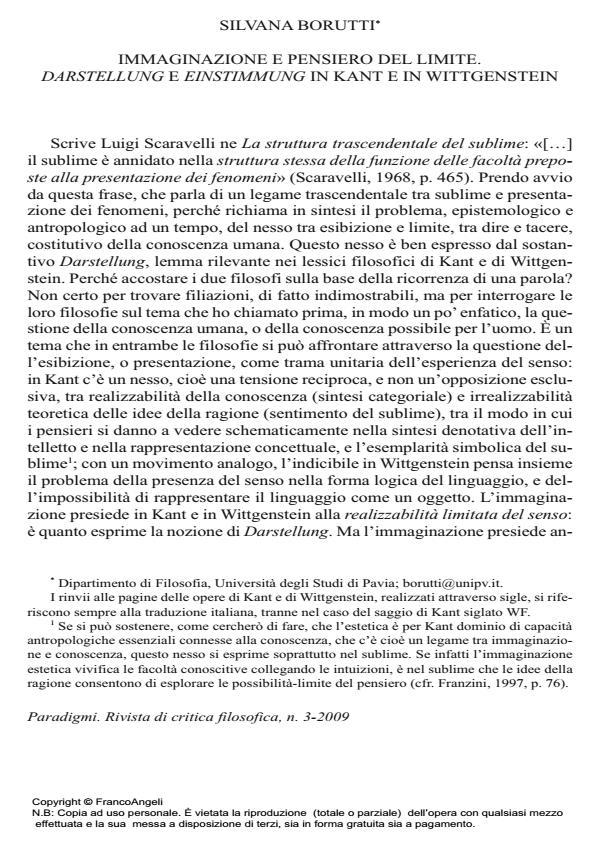Immaginazione e pensiero del limite. Darstellung e Einstimmung in Jant e in Wittgenstein
Journal title PARADIGMI
Author/s Silvana Borutti
Publishing Year 2009 Issue 2009/3 Language Italian
Pages 25 P. 101-125 File size 123 KB
DOI 10.3280/PARA2009-003008
DOI is like a bar code for intellectual property: to have more infomation
click here
Below, you can see the article first page
If you want to buy this article in PDF format, you can do it, following the instructions to buy download credits

FrancoAngeli is member of Publishers International Linking Association, Inc (PILA), a not-for-profit association which run the CrossRef service enabling links to and from online scholarly content.
Imagination and Human Boundaries. Darstellung and Einstimmung in Kant and Wittgenstein - This essay focuses on the occurrence of two words-concepts in Kant’s and Wittgenstein’s texts: Darstellung, which designates in both philosophies the imaginative activity of exhibition or presentation, essential in the experience of meaning, and Einstimmung, which designates the inter-subjective communicability of meaning. In Kant’s philosophy, Darstellung plays a fundamental role in connecting the cognitive faculties. It refers, on the one hand, to the sublime character of imaginative power, which makes representation free from presence, and, on the other hand, to the inter-subjective and communicable character of this human capacity. By Darstellung also Wittgenstein refers to the presence of meaning in the logical form of language, and, at the same time, to the impossibility of representing language as an object. Imagination also presides over the communicability of meaning understood as an agreement, that is both a consonance of voices and a consent inscribed in the body.
Key words: Agreement, Imagination, Presentation, Seeing as, Showing, Sublime.
Parole chiave: Darstellung, Immaginazione, Mostrare, Sublime, Übereinstimmung,
Silvana Borutti, Immaginazione e pensiero del limite. Darstellung e Einstimmung in Jant e in Wittgenstein in "PARADIGMI" 3/2009, pp 101-125, DOI: 10.3280/PARA2009-003008